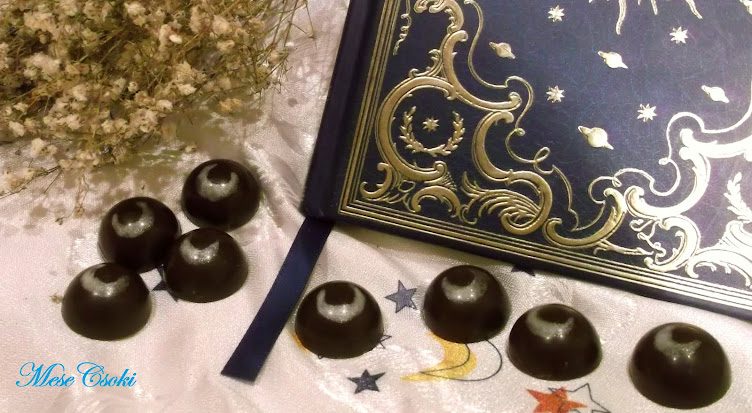Ami az egyiknek szerencsét hoz, a másiknak balszerencsét - és úgy tűnik, a szeder esetében ez hatványozottan igaz. Ahány mitológiai említése, annyi féle - ez talán nem is véletlen, ha figyelembe vesszük, milyen szép a virága és ízletes a gyümölcse, és mennyire szúrósak a bokrok ágai. Kalandozzunk egyet térben és időben, és fedezzük fel, milyen történeteket szőttek a szeder köré!
A kelták - természetesen - a tündérek gyümölcsének tartották, így emberi fogyasztásra alkalmatlannak ítélték; a tündérek útjai mentén szederbokrok húzódtak. Aki mégis megízlelte a gyümölcsöt, szerencsétlenséget hozott a saját fejére.
Angliában a sérv, csonttörések, kelések gyógyításához vadszeder ágai alatt bújtak át.
Továbbá a szeder különféle szörnyek ellen is védelmet nyújtott: így például a vámpírokat azzal tartották távol, hogy szedret helyeztek a küszöbre vagy az ablakpárkányra, mert a vámpír megszállottan számolgatta a bogyókat és a tüskéket, és közben elfeledte, miért érkezett. A sírok köré is szedret ültettek, hogy a holtak ne kísérthessenek.
A keresztény mitológiában a szeder mind Krisztushoz, mint a Sátánhoz kapcsolódva megjelenik. Egyrészt Jézus töviskoronája vadszederből készült, ezért változtak a korábban vörös bogyók feketévé. Másrészt, amikor Isten levetette Lucifert az égből, ő egy szederbokorban landolt, és mérgében megátkozta, hogy csúnya legyen.
Végezetül a kedvencem: a bolgár mitológia bumfordi óriásai, az ispolinok, akik az emberek előtt népesítették be a Földet, igencsak ódzkodtak a szedertől. A mítoszok szerint ugyanis hiába voltak hatalmasak és erősek, ugyanakkor igen lomhák is voltak, és nehezükre esett észrevenni és kikerülni a szederbokrokat. Az az óriás, akinek az útjába ilyen bokor került, elbotlott benne, összeszurkálta magát a tüskékkel, és odaveszett. Épp ezért az ispolinok áldoztak a szedernek.
Ebből kiderült, hogy miért nem lettünk még vámpírok martalékává: a kertünkben két szederbokor is nő :D Az én szedres csokim pedig csak kellemes ízélményt okozott, bár várom, hogy mikor átkoznak el a tündérek, amiért a gyümölcsüket fogyasztottam.
Hozzávalók:
15 gr joghurt
30 ml szederpüré
80 gr fehércsoki
200 gr tejcsoki
egy marék fahéjas müzli
transzferfólia
Elkészítés:
Átpasszírozom a szedret egy szitán, a léhez hozzákeverem a joghurtot (én meggyeset használtam, elég kellemes utóízt adott a krémnek. Szerintem natúr joghurttal is működne, vagy más, savanyú ízvilágú gyümölcsös joghurttal). Megolvasztom a fehércsokit, majd a szederhez adom.
Méretre vágom a transzferfóliát, belehelyezem a mágneses formába. Temperálom a tejcsokit, elkészítem a burkokat. Miután megszilárdultak, félig megtöltöm őket a szedres krémmel, majd hűtőbe teszem a formát.
Amikor a töltelék teljesen áthűlt és szilárd lett, darabkákra tört fahéjas müzlit szórok a bonbonokba. Kicsit belenyomkodom a krémbe ezt a második réteget, hogy ne okozzon gondot a lezárásnál.
Temperálom a maradék tejcsokit, lezárom a bonbonokat.
What brings luck to one, may bring misfortune to another - and it seems, this is exponentially true in the case of the blackberry. All of its mythological references are different - which is probably not a coincidence, taken into account its beautiful flower and tasty fruit, as well as the thorny branches. Let's wander through space and time and let's discover what kind of stories were woven around the blackberry.
The Celts - naturally - considered it the fruit of the fairies, which also meant that humans were not allowed to consume it; brambles framed the paths of the fairies. Those who still ate the fruit, had bad luck.
In England, hernia, ruptures and boils could be cured by passing under the branches of a bramble.
Moreover, the blackberry meant protection against a variety of monsters: for instance, placing blackberries on the threshold or the window sill could keep vampires away, as the vampire would obsessively count the berries and the thorns and in the meantime would forget why he came. Blackberry was also planted around graves to keep the dead from haunting.
In Christian mythology, the blackberry is connected both to Christ and Satan. First, the crown of thorn of Jesus was made of brambles, thus the previously red berries were turned to black. Second, when God cast Lucifer down from heaven, he landed in brambles and cursed them in anger, so they would be ugly.
Finally, my favorite: the ispolini, the funny giants of Bulgarian mythology, who inhabited the Earth before humans, were afraid of blackberries. According to the myths, even though they were powerful and strong, they were also sluggish and thus were unable to spot and avoid blackberry bushes. The giant, who passed such a bush, would stumble in it, get stabbed by the thorns and perish. Therefore, the ispolini offered sacrifices to the blackberry.
This makes it clear why we haven't been eaten up by vampires yet: there are two blackberry bushes in our garden :D My blackberry chocolate has only caused a pleasant tasting experience, although I'm still waiting for the fairies to curse me for eating their fruit.
Ingredients:
15 gr yogurt
30 ml blackberry puree
80 gr white chocolate
200 gr milk chocolate
fistful of cinnamon cereal
transfer sheet
Recipe:
I pass the blackberry through a sieve; I add the yogurt to the juice (I used sour cherry yogurt, which gave a nice aftertaste to the cream. I believe it would also work with plain yogurt or any other sourish fruit yogurt). I melt the white chocolate and add it to the blackberry.
I cut up the transfer sheet and place it in the magnetic mold. I temper the milk chocolate and I prepare the shells. When they get solid, I half fill them with the blackberry cream. Then I put the mold in the fridge.
When the filling has completely cooled and it gets solid, I sprinkle crushed cinnamon cereal in the bonbons. I gently push it into the cream so that it wouldn't cause any trouble later. I temper the leftover milk chocolate and I seal the bonbons.






